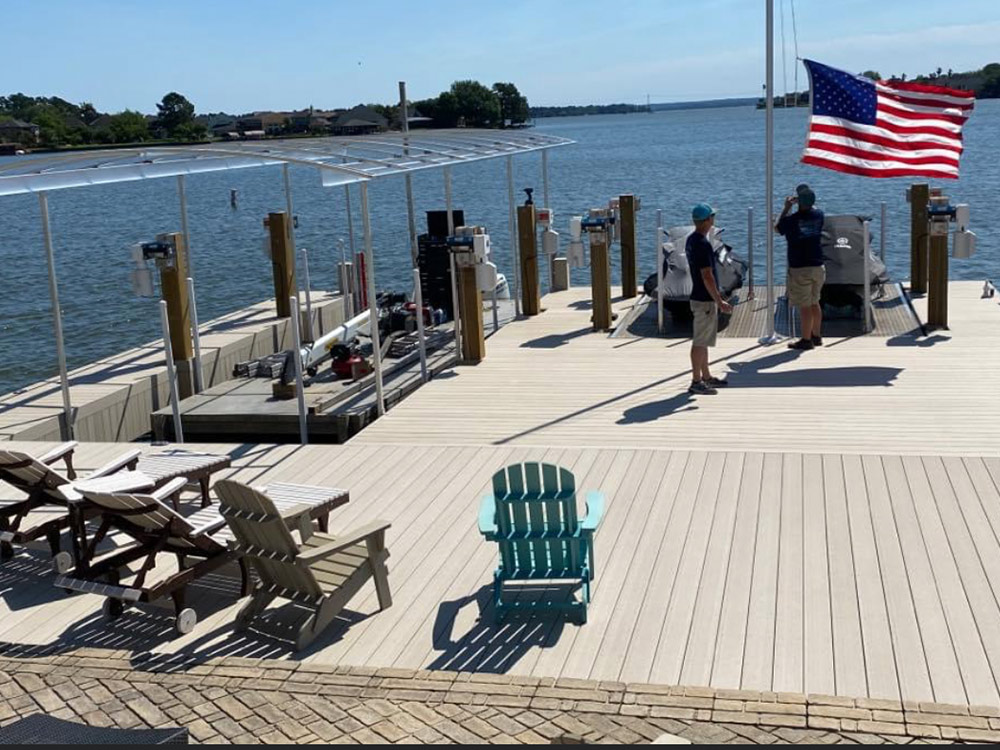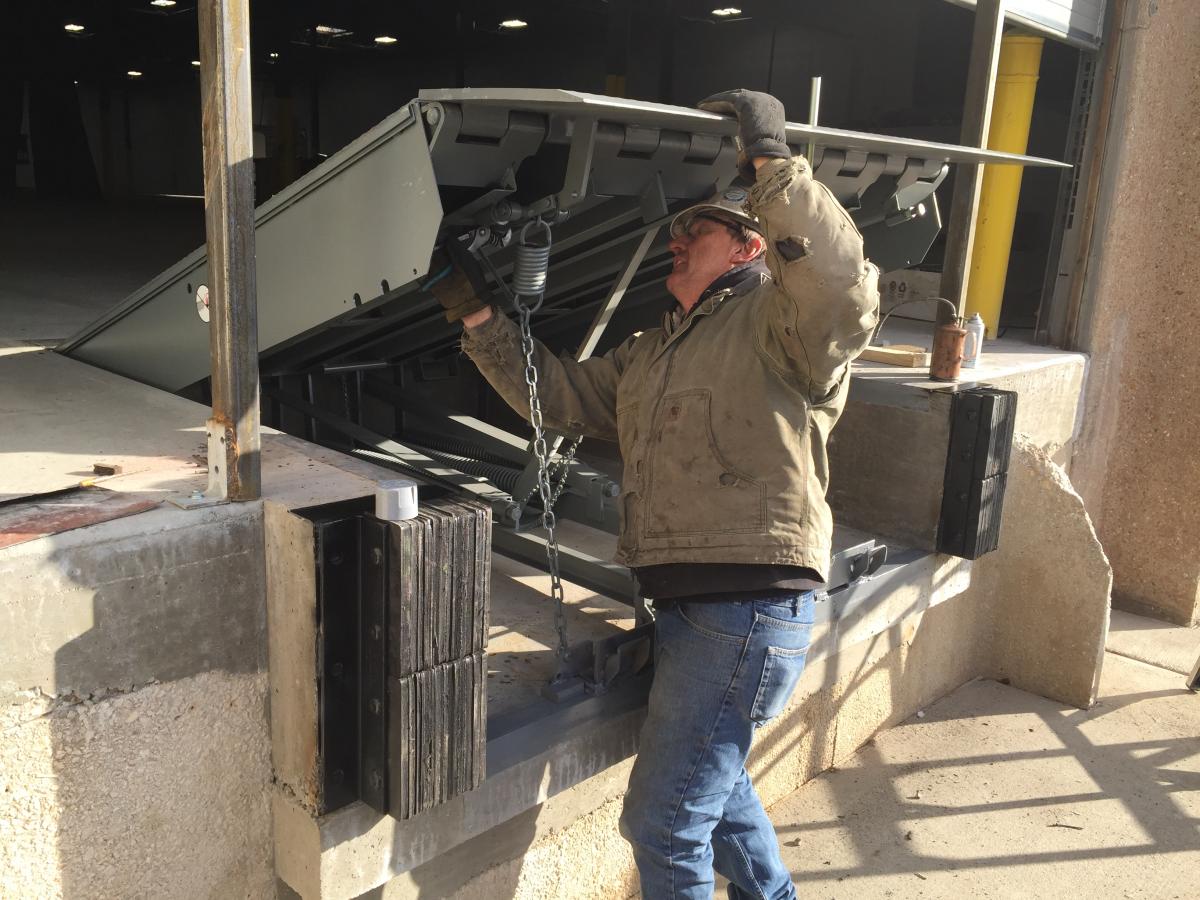DIY Tips for Simple Dock Repairs You Can Take Care Of
DIY Tips for Simple Dock Repairs You Can Take Care Of
Blog Article
Effective Dock Fixing Techniques: Guaranteeing Architectural Integrity
Guaranteeing the structural integrity of anchors via reliable fixing methods is critical for the longevity and security of marine facilities. Consequently, selecting the right repair products, such as corrosion-resistant alloys and composite materials, is vital for durability.
Assessing Dock Damage
Evaluating dock damage is a crucial very first action in making sure the structural integrity and safety and security of any type of docking center. This first assessment involves a thorough examination to identify both visible and surprise damages. Trick aspects to examine include the dock's foundation, pilings, outdoor decking, and equipment. Each part must be inspected for indicators of wear, rot, deterioration, or other types of destruction that can compromise the structural stability.
Architectural designers or certified examiners normally do these evaluations utilizing specialized methods and tools. Undersea evaluations might use finder devices or remotely ran lorries (ROVs) to find submerged damage. Over water, aesthetic evaluations are complemented by making use of wetness meters and other analysis tools to uncover underlying concerns not promptly visible to the nude eye.

Picking Fixing Products
Picking the ideal repair materials is an essential step in the dock restoration procedure, one that straight affects the long life and efficiency of the fixed framework. Product option must be driven by factors such as environmental conditions, load-bearing demands, and compatibility with existing dock elements. As an example, timber is a typical choice for anchors due to its natural resilience and aesthetic appeal. Nevertheless, choosing the appropriate kind of timber, such as pressure-treated lumber or naturally rot-resistant species like cedar or teak, is important to stand up to marine settings.
Along with wood, composite materials are increasingly prominent because of their durability and low upkeep demands. Composites, generally made from a mix of plastic and wood fibers, offer exceptional resistance to rot, insects, and UV damages. For metal anchors, selecting corrosion-resistant alloys such as galvanized steel or marine-grade aluminum is necessary to avoid corrosion and guarantee structural stability in saline water conditions.
Epoxy materials and marine-grade sealants are indispensable for fixing cracks and sealing joints, offering a water resistant barrier and enhancing the dock's total strength. By thoroughly choosing high-quality products, dock repairs can accomplish long-lasting outcomes, thereby safeguarding against future degradation and making certain risk-free, reputable usage.
Structural Reinforcement Strategies
Efficient structural reinforcement techniques are essential in ensuring the security and long life of dock fixings. This approach is especially efficient for docks subjected to heavy lots or harsh environmental conditions.
Another important technique is the application of fiber-reinforced polymers (FRP) These materials supply high strength-to-weight proportions and superb resistance to deterioration, making them optimal for strengthening concrete or wooden docks. FRP can be used in sheets or strips and bound with epoxy resins to enhance structural integrity.
Supporting and securing systems additionally play a crucial role in structural support. Cross-bracing, utilizing metal or wood light beams, can combat lateral pressures, lowering persuading and movement. Anchoring systems, such as helical piers or driven stacks, offer a stable structure by moving tons to much deeper, a lot more stable soil layers.
Lastly, the integration of load-distribution plates can help distribute weight more equally across the dock's surface, mitigating local stress and anxiety points. These techniques jointly make sure that anchors continue to be robust and secure, efficient in standing up to the rigors of their operational atmosphere.
Advanced Repair Work Approaches

An additional advanced method includes underwater welding, which enables repair services to be performed without read here the demand to dewater the location. This method is especially beneficial for resolving structural issues in submerged dock elements, making certain minimal disruption to operations. Improved welding methods, combined with robotic systems, deliver precision and dependability, thus prolonging the lifespan of article the dock.
Furthermore, cathodic defense systems are implemented to avoid corrosion in metallic dock structures. By utilizing sacrificial anodes or satisfied existing systems, these methods successfully alleviate the electrochemical processes that lead to material deterioration.
Lastly, progressed tracking innovations, such as architectural wellness tracking (SHM) systems, provide real-time information on the condition of dock structures. These systems make it possible for aggressive upkeep and timely treatments, eventually ensuring the lasting architectural integrity of the dock.
Maintenance and Avoidance
Maintenance and avoidance are essential concepts that underpin the long life and safety and security of dock structures. Normal examinations are extremely important, allowing for early discovery of deterioration, potential weaknesses, and environmental effects. An aggressive technique, entailing routine look for rust, rot, and architectural shifts, reduces costly repair services and prolongs the dock's operational life.
Preventative steps must include applying safety coverings to steel parts to protect against rust and utilizing cured wood to withstand degeneration. Additionally, making sure correct drainage and ventilation can stop water buildup, which is a common cause of structural deterioration. Including quality materials and sticking to manufacturer guidelines during building and construction and repair work phases additionally play important duties in boosting sturdiness.

Training personnel in dock maintenance best methods makes sure constant application of precautionary procedures. Leveraging technological developments, such as drones for assessments and sensing units for real-time tracking, can additionally boost upkeep efforts. By prioritizing maintenance and avoidance, dock proprietors can make certain architectural integrity, operational safety and security, and cost-effective monitoring over the dock's life-span.
Verdict
In conclusion, maintaining the architectural honesty of aquatic centers demands comprehensive dock repair work techniques. Thorough examinations utilizing advanced devices discover both noticeable and hid problems, while the selection of ideal repair service materials enhances durability. Carrying out structural support methods addresses stress and anxiety points properly. Advanced repair service techniques, paired with routine maintenance methods, make certain the dock remains risk-free and operational under diverse environmental problems. Taking on these techniques significantly prolongs the life expectancy and capability of marine facilities.
Ensuring the structural stability of anchors via efficient repair service strategies is critical for the durability and safety and security of aquatic facilities.Selecting the ideal repair work materials is an essential action in the dock reconstruction procedure, one that directly affects the longevity and performance of the repaired structure.Effective structural support strategies are crucial in making certain the stability and longevity of dock repairs. By focusing on upkeep and avoidance, dock proprietors can guarantee structural honesty, operational safety, and cost-effective monitoring over the dock's life-span.
In verdict, maintaining the structural honesty of aquatic facilities necessitates comprehensive dock fixing strategies.
Report this page